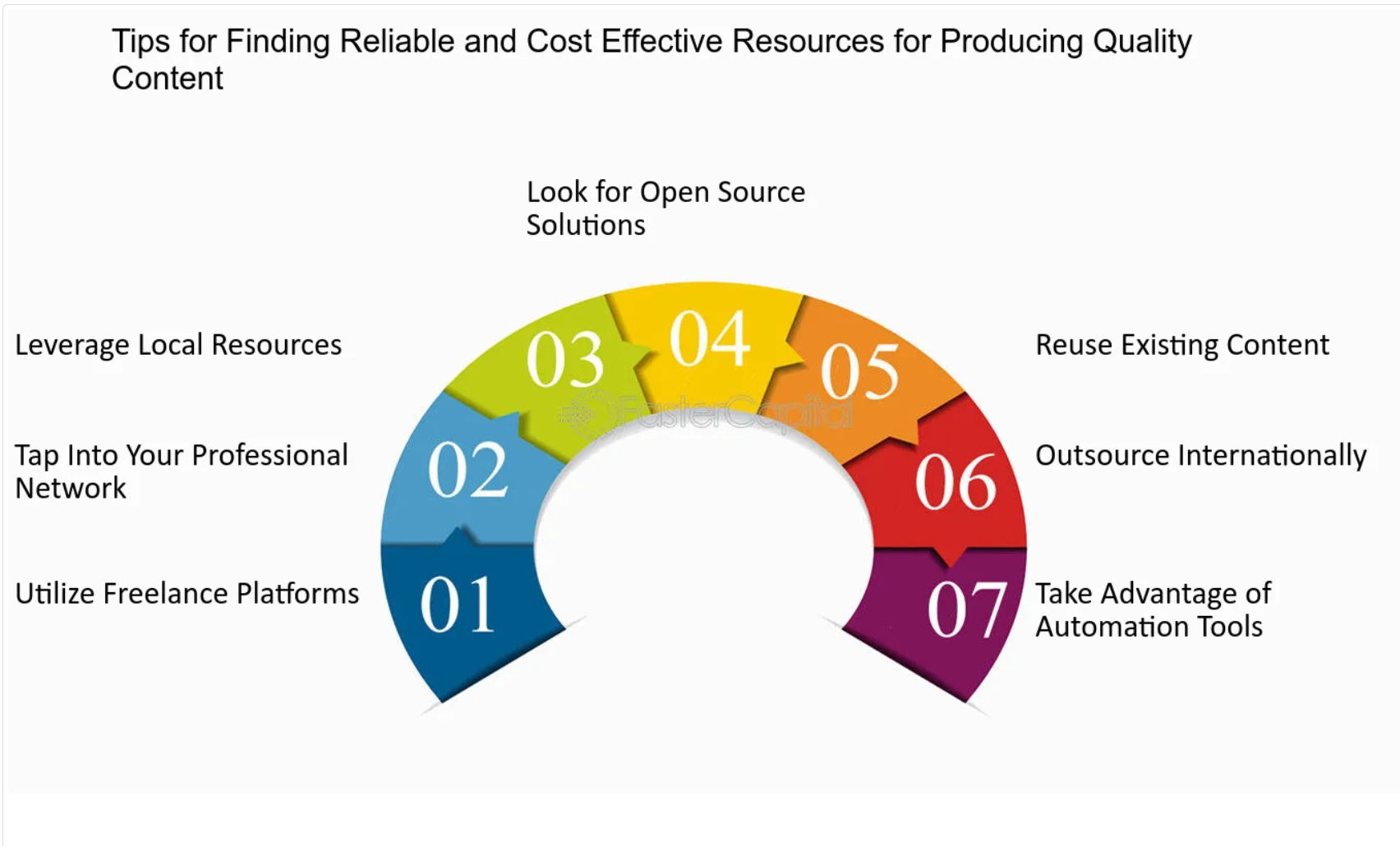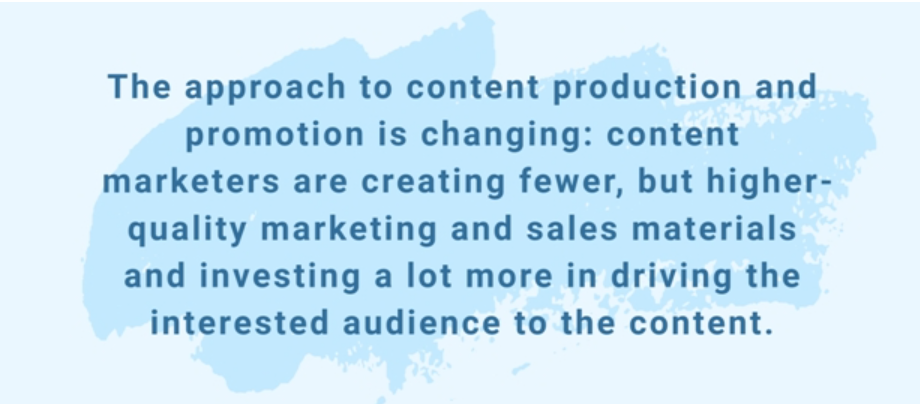In 2024, managing your content marketing budget effectively is crucial to stand out. With so many brands competing online, it’s easy for your efforts to go unnoticed. Smart budgeting can prevent wasting money on ineffective tactics.
This guide will show you how to allocate your funds wisely, ensuring your content reaches and engages your audience. By tackling these challenges, you’ll be better positioned to generate leads, boost sales, and stand out in a crowded space. Let’s explore how to make every dollar work harder for your content marketing strategy.
- What are Your Content Marketing Goals?
- Analyzing Your Current Content Marketing Budget Performance
- Determining Your Content Marketing Budget Allocation
- Investing in High-Quality Content Creation
- Leveraging Content Distribution Channels
- Maximizing Content Impact with SEO Strategies
- Measuring and Adjusting Your Content Marketing Budget Strategy
- Leveraging Technology and Tools for Content Marketing Efficiency
- Mastering Your Content Marketing Budget in 2024
- FAQs
- What percentage of my overall marketing budget should go to content marketing?
- How often should I revisit and adjust my content marketing budget?
- Can small businesses compete with larger ones in content marketing with a limited budget?
- What are the most cost-effective types of content?
- How do I measure the ROI of my content marketing efforts?
What are Your Content Marketing Goals?
Before deciding how much money to invest in your content marketing budget, it’s essential to figure out what you want to achieve. This means setting clear and measurable goals that will help guide your strategy and determine whether it’s working effectively.
Some common goals include the following:
- making more people aware of your brand,
- getting more people interested in what you offer,
- making your customers more engaged,
- and increasing your sales.
By figuring out what you want to achieve, you can create a content marketing plan to help you reach your goals and ensure that every dollar you spend is working towards making those goals a reality.
Analyzing Your Current Content Marketing Budget Performance
When deciding on your content marketing budget, you must look back at what you’ve done before and figure out what worked and what didn’t. This will help you make better choices for the future.
You can also use analytical tools to see how well your marketing did on different websites and social media platforms. Some metrics to look at include:
- how many people visited your website,
- how much they interacted with your content,
- how many people became customers because of your marketing,
- and how many people saw your message and did what you wanted them to do.
By analyzing this information, you can see where to make changes and decide where to put your money to get the best results.
Determining Your Content Marketing Budget Allocation
Allocating your content marketing budget requires careful consideration of several factors. Your business size, industry, target audience, and marketing goals include these factors.
A standard guideline suggests allocating a portion of your overall marketing budget to content marketing, but the exact percentage can vary based on your specific needs and objectives.
For instance, businesses in highly competitive industries or those targeting younger demographics might need to invest more in content marketing to stand out.
It’s also essential to consider the distribution of your budget across various content types and channels. High-quality content creation, whether blog posts, videos, infographics, or podcasts, should be a significant part of your budget.
However, pay attention to the importance of content distribution. Invest in SEO, social media, email marketing, and paid advertising. This can help ensure your content reaches your target audience.
Investing in High-Quality Content Creation

The foundation of any successful content marketing strategy is creating high-quality content. In an age where consumers are bombarded with information, only the most engaging and valuable content will capture their attention.
Focus on producing content that addresses the needs and interests of your target audience. This provides them with solutions and insights that establish your brand as a thought leader in your industry.
Quality content attracts and retains customers and enhances your SEO efforts, increasing your visibility in search engine results.
While creating high-quality content requires a significant investment, the long-term benefits, including increased engagement and conversion rates, make it worthwhile.
Leveraging Content Distribution Channels

Creating compelling content is only half the battle—the other half ensures it reaches your intended audience. Efficiently leveraging content distribution channels is crucial for maximizing the impact of your content marketing efforts. The choice of channels should align with where your target audience spends their time and the nature of your content. Here are vital platforms to consider:
Social Media
Platforms like Instagram, LinkedIn, Twitter, and Facebook offer unique opportunities to share and promote content, engage with your audience, and increase brand visibility. Tailor your content to fit the format and audience of each platform for optimal results.
Email Marketing
An effective channel for direct communication, email marketing allows you to deliver personalized content directly to your audience’s inbox, fostering stronger relationships and driving engagement.
SEO
A well-optimized website and blog can attract organic traffic through search engines. Focus on keyword research, quality content, and on-page SEO to improve your rankings and visibility.
Paid Advertising
Consider allocating part of your budget to paid channels, such as PPC campaigns, sponsored content, or social media ads, to effectively boost reach and target specific audiences.
By diversifying your content distribution efforts across multiple channels, you can extend your reach and engage more potential customers. This will drive better results from your content marketing investments.
Maximizing Content Impact with SEO Strategies
SEO plays a pivotal role in enhancing the visibility and effectiveness of your content marketing.
Integrating SEO strategies into your content creation and distribution efforts can significantly increase your content’s reach and engagement. Here are essential SEO strategies to implement:
Keyword Research
Identify high-value keywords that your target audience uses to search for information related to your products, services, or industry. Incorporate these keywords naturally into your content to improve its relevance and visibility.
On-Page Optimization
Optimize your content for search engines by using relevant keywords in titles, meta descriptions, headers, and throughout the content body. Additionally, ensure your website’s structure and URLs are SEO-friendly.
Quality Backlinks
Focus on earning high-quality backlinks from reputable websites. Backlinks signal to search engines that your content is valuable and authoritative, improving your site’s ranking.
By adopting these SEO strategies, you can maximize the visibility of your content in search engine results, attracting more traffic to your website and increasing the overall effectiveness of your content marketing efforts.
Measuring and Adjusting Your Content Marketing Budget Strategy
To ensure the success of your content marketing budget strategy, it’s essential to measure its performance and make necessary adjustments continuously.
Establish KPIs aligned with your marketing goals, such as website traffic, lead generation, conversion rates, and social media engagement. Regularly analyze these metrics to assess the effectiveness of your content and distribution channels.
Based on your findings, adjust your strategy as needed. This may involve reallocating your budget towards more effective channels, experimenting with different content formats, or refining your SEO tactics.
The goal is to create a dynamic content marketing strategy that evolves with your audience’s needs.
Leveraging Technology and Tools for Content Marketing Efficiency
In today’s digital world, numerous technologies and tools can streamline your content marketing processes, enhance efficiency, and improve the impact of your efforts. Consider incorporating the following into your strategy:
Content Management Systems (CMS)
Platforms like WordPress and Drupal simplify creating, managing, and publishing content, allowing you to maintain a consistent content schedule.
Analytics Tools:
Google Analytics and SEMrush provide valuable insights into your content’s performance, audience behavior, and SEO rankings. This enables data-driven decisions.
Automation Tools:
Automate repetitive tasks, such as social media posting and email campaigns, with tools like Hootsuite and Mailchimp to save time and ensure consistent engagement with your audience.
Investing in the right technologies can significantly enhance the effectiveness of your content marketing strategy. This allows you to produce more content, reach a wider audience, and achieve better results with the same budget.
Mastering Your Content Marketing Budget in 2024
Allocating your content marketing budget efficiently in 2024 requires a strategic approach. The budget should be focused on setting clear goals, creating high-quality content, leveraging diverse distribution channels, and incorporating SEO strategies.
To ensure your content marketing efforts are practical, you must closely monitor how things are going and adjust your strategy as needed. You can also use technology to help you work more efficiently.
Remember that content marketing is constantly changing, so it’s essential to keep learning and staying up-to-date on the latest trends and best practices.
If you need help getting started, Flying V Group can help. Our team of experts can work with you to create a plan. So contact us today to discover how our content marketing expertise can transform your digital presence.
FAQs
What percentage of my overall marketing budget should go to content marketing?
Many businesses allocate between 20% and 40% of their marketing budget to content marketing efforts. However, the ideal percentage can vary based on industry, business size, and specific marketing goals. Consider your company’s needs and competitive landscape to determine the most effective allocation.
How often should I revisit and adjust my content marketing budget?
Review and adjust your content marketing budget every quarter to align it with your business goals and maximize ROI. This allows you to respond to changes in marketing performance, shifts in consumer behavior, or emerging trends within your industry.
Can small businesses compete with larger ones in content marketing with a limited budget?
Content marketing allows small businesses to compete effectively by targeting niche markets and focusing on high-quality, engaging content. Personalization and authenticity often outweigh the scale, making it a powerful tool for small businesses.
What are the most cost-effective types of content?
The most cost-effective types of content typically include blog posts, infographics, and social media content. These formats require relatively lower investment and have the potential for high engagement and shareability. Additionally, repurposing existing content into new formats can maximize your content’s value and reach without significantly increasing your budget.
How do I measure the ROI of my content marketing efforts?
To measure your content marketing ROI, track metrics aligned with business goals such as website traffic, lead generation, conversion rates, and social media engagement. Calculate content production and distribution costs against revenue or value generated. Tools like Google Analytics and CRM software can help track metrics and provide insights.






0 Comments